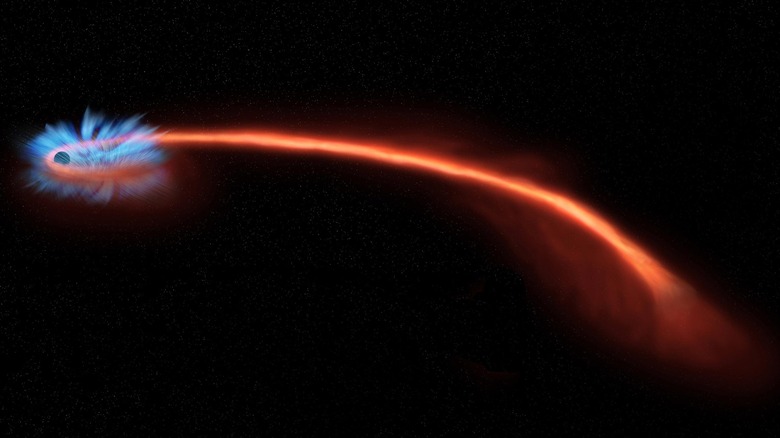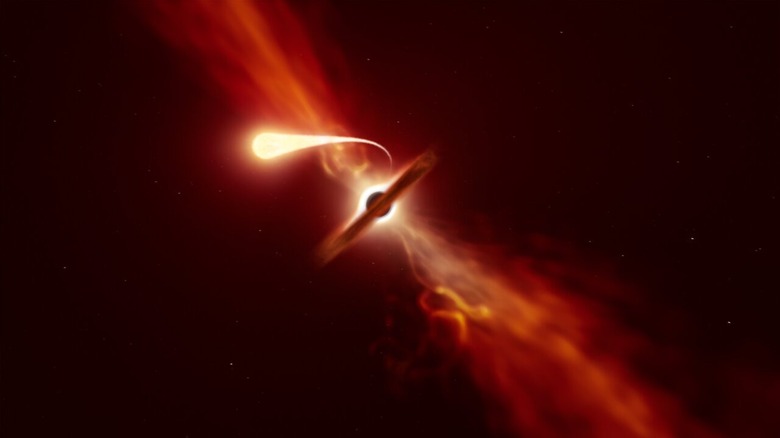What Happens To A Star After It Gets Spaghettified By A Black Hole?
Of all the terrors that lurk in the depths of space, one class of object stands out above all others: black holes. If you were to venture close enough to a black hole, you'd be on a one way trip, experiencing a phenomenon called, delightfully enough, spaghettification. The forces of gravity pulling at your feet would stretch you out like a noodle, compressing your body horizontally while lengthening it vertically. As horrifying as this possibility is, no human has yet experienced it — but stars have, and new research helps us understand what happens to a star which gets so roundly squished by enormous gravity (via University of California, Berkeley).
Astronomers observed a star getting spaghettified by a black hole in 2019, when it ventured too close and was ripped apart. This process, technically called tidal disruption, happens because the gravity of the black hole is so strong that it pulls harder on one side of the object than the other, distorting it. And studying the after-effects of this violent interaction can help astronomers learn more about the massive forces of a black hole.
"One of the craziest things a supermassive black hole can do is to shred a star by its enormous tidal forces," said one of the authors of the study published in Monthly Notices of the Royal Astronomy Society, Wenbin Lu of University of California, Berkeley. "These stellar tidal disruption events are one of very few ways astronomers know the existence of supermassive black holes at the centers of galaxies and measure their properties. However, due to the extreme computational cost in numerically simulating such events, astronomers still do not understand the complicated processes after a tidal disruption."
What happens to a spaghettified star
When a star gets close to a black hole and is ripped apart, a large amount of its matter is thrown outward at huge speeds of up to 10,000 kilometers per second. This matter forms a cloud of gas around the black hole in a spherical shape, which makes the event hard to observe as the gas blocks much of the view.
To understand more about how this process happened in the case of 2019 observations, researchers looked at the polarization of the light. Polarization refers to the direction in which the light waves vibrate, and by looking at it the researchers could see that the cloud of gas was symmetrically spherical (via University of California, Berkeley). This was the first time that the shape of such a gas cloud had been ascertained, according to another of the researchers, Alex Filippenko of University of California, Berkeley.
This finding also helps to support the theory that these spaghettification events are accompanied by strong winds of gas blowing away from the black hole. "People have been seeing other evidence of wind coming out of these events, and I think this polarization study definitely makes that evidence stronger, in the sense that you wouldn't get a spherical geometry without having a sufficient amount of wind," said lead author Kishore Patra, also of University of California, Berkeley. "The interesting fact here is that a significant fraction of the material in the star that is spiraling inward doesn't eventually fall into the black hole — it's blown away from the black hole."

